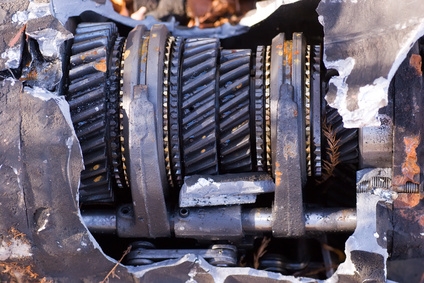
Diagnosing a no-start issue with your Nissan requires a logical approach to discovering what might be stopping your car from starting. When you try to start your car, voltage from the battery passes through the ignition switch to the Park/Neutral safety switch then to the brake/clutch pedal to the starter solenoid. When voltage reaches the solenoid, a contact is closed that sends power to the starter to start the engine. The starter motor spins, pushes the starter pin into the flywheel and rotates the engine.
Look for corroded or loose battery connections. Corrosion looks white or green. Clean any corrosion off of the battery connections using a wire brush, baking soda and water. Tighten the battery cables.
Remove the battery. Take the battery to an auto parts store for testing. Replace the battery if it is faulty. Charge the battery if the battery is dead but still good.
Place the Nissan in Park. If the Nissan is in a gear other than Park, the car will not start. For manual transmission transaxles, depress the clutch completely when attempting to start the Nissan.
Look for broken, loose or disconnected wires to and from the starter, alternator, battery, starter solenoid and distributor. Replace any damaged wires. Tighten any loose wires.
Change the starter solenoid if a clicking sound is not heard when attempting to start the Nissan.
Replace the starter if the starter motor spins but the engine still does not start.
Replace the ignition switch.
Check the flywheel for missing or worn teeth. In order to examine the flywheel, the transaxle must be removed from the vehicle.
Check the gas level in the fuel tank. Add fuel if necessary. Gauges can become stuck and may not always give an accurate reading.
Remove the battery. Take the battery to an auto parts store for testing. Replace the battery if it is faulty. Charge the battery if the battery is still good.
Clean corrosion off of the battery cables with baking soda, water and a battery brush. Tighten any loose battery cables.
Replace the O-rings for the fuel injectors if the injectors are leaking. Removing the intake plenum and fuel rail is required for replacing the O-rings.
Turn the ignition to the On position without starting the vehicle. Listen for the whirring sound from the fuel pump. If a whirring sound is heard, check the fuel pump fuse. Replace the bad fuse. Replace the fuel pump if the fuse is good.
Replace the fuel pump regulator.
Check and replace the timing chain if the chain is broken. Inspecting the timing chain requires removing the valve cover, drive belts, power steering pump and part of the exhaust.
Check for damp ignition components. Damp components can prevent a vehicle from starting properly. Allow the components to dry.
Pull out the spark plugs. Check the spark plugs for incorrect gap and wear. Replace the spark plugs.
Look for broken, loose or disconnected wires to and from the starter, alternator, battery, starter solenoid and distributor. Replace any damaged wires. Tighten any loose wires.
Tighten the distributor screws with a Phillips screwdriver.
Check for damaged wiring at the ignition coil. Replace any broken wires. Tighten any loose wires. Replace the ignition coil.